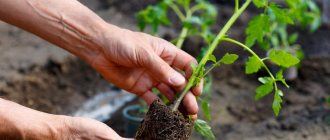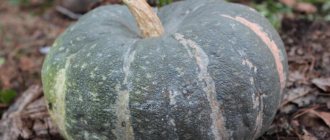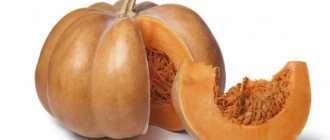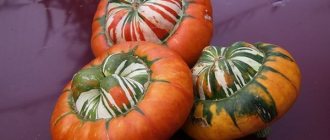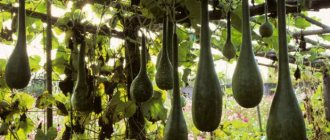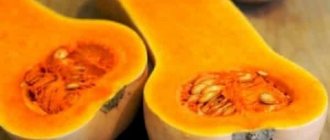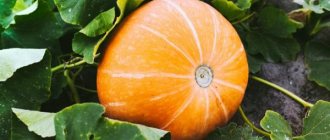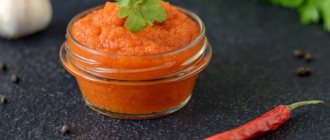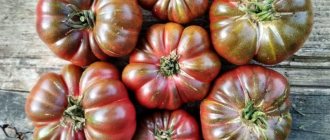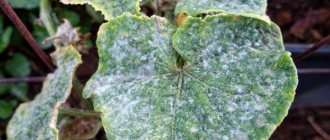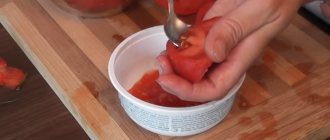Vegetable growing » Pumpkin
0
628
Article rating
Kira Stoletova
Among the large number of varieties of this crop, the Guitar pumpkin is especially popular. The variety is distinguished by its high taste, and the long shelf life of the fruit allows the vegetable to be eaten even in winter.
Growing Pumpkin Guitar
Butternut squash Guitar: variety description
All gardeners love these varieties of pumpkins, and other vegetables in general, which are easy to care for, and the harvest is very tasty and can be stored for a long time. Today we will talk about this variety of pumpkin “Guitar”, which fits this description perfectly.
- Sometimes the Guitar pumpkin variety is called “Honey” or “Spanish”. It was bred by domestic breeders from and included in the register in 2013.
- Like all representatives of this culture, the Honey Guitar pumpkin is a heat-loving variety with a development cycle of one year. Most often, the cultivation of Guitar pumpkin occurs in the southern regions, as well as in the middle zone - using the seedling method.
- This variety has a developed root system. The length of the rod reaches 2.5 meters - which easily allows you to nourish any large fruit. Even in a young shoot, which is 10-20 cm long, the roots penetrate deeply to about 40 cm.
An interesting fact is that if the ground is moist for a sufficient amount of time, the pumpkin is able to take root from the stem, germinating in a new place.
- The Spanish Guitar pumpkin has a creeping, prickly and rough stem. It grows very quickly, its length can reach 4-5 meters. The shoots produce tendrils that allow the plant to cling to supporting elements.
- The foliage of the Guitar variety is large, wide, reaching 25 - 30 cm in diameter, and has a rich green color with white spots.
- The flowers of both the male and female types are large, the diameter reaches 11 cm. They are characterized by an orange-yellow color and are formed in the axils of the foliage. Pedicels vary depending on the type of plant. In the male type, the peduncle length is longer, in the female type, the length of the peduncle is shorter.
- The corollas bloom with the sun - early in the morning. And they close at sunset, as the sun goes down. The flowering period of fruitful buds is much longer than that of male - non-fruitful ovaries.
- Pollination of plants occurs by insects. To do this, many leave the windows wide open. Gardeners also very often resort to hand pollination. The maximum level of pollen production occurs in the first part of the day.
- The flowering phase of the Guitar occurs only at the moment when the thermometer reaches +18...+25 degrees.
- As mentioned earlier, Guitar is very fond of light and warmth. The optimal development temperature is +20 degrees. The plant is afraid of even small frosts, which can destroy the entire plant.
- If pumpkin fruits are exposed to sub-zero temperatures, they most often freeze slightly and become covered with soft spots along the contour, in which negative organisms multiply.
- This variety is noted as drought resistant. This is due to its developed root system, which absorbs moisture from the depths.
- Coolness and lack of sun slow down plant development and also create a threat of disease development.
- The yield of the Guitar variety is approximately 2.5 to 4 kg of vegetables per square meter. This certainly depends on the region and climatic conditions. On each shoot, as a rule, 2-3 fruits are left to ripen. This is done in order to give them the opportunity to fully ripen and fill up.
How to care?
Pumpkin Guitar requires standard care. It needs to be watered, fertilized if necessary, and prevented from infectious diseases and attacks by insect pests. When watering, use warm water heated in the sun.
Despite the fact that the plant is stress-resistant, the temperature of the irrigation liquid and soil should be approximately the same.
In the southern regions, watering is carried out once a week. In extreme heat, do 2 approaches per week. In the Siberian regions, when grown in an open area, the soil is moistened once every 2-3 weeks. In some regions the plant does not require watering. Always monitor the condition of the soil.
It should be loose. Protect the pumpkin from heavy, constant rains with film so as not to provoke waterlogging. Mulch is placed in the garden bed.
After watering, it is necessary to loosen the soil. At the same time, weeding and hilling are carried out. Hilling is carried out only for young seedlings. The soil is added to the bushes 2 times with a break of 2-3 weeks.
During the first hilling, the hillock near the plant should rise by 10 cm. The second time, the soil is added to 6 cm. If there is mulch in the bed, then hilling is carried out along with it.
As the nutmeg pumpkin develops, it is necessary to form a bush. Her lashes are long, but they are not cut right away. In the initial growing season, you can pinch off the lateral shoots, leaving 2-3 stems.
Otherwise, the plant will fill the entire garden, which will negatively affect other plantings that are grown on the site and the condition of the soil. Dense tops do not allow the soil to be well ventilated. A fungus can develop on the surface, which will lead to the death of the plant.
Some gardeners make a net for the stems, which they lay on the ground. The mesh prevents the lashes from coming into contact with the wet surface. This keeps them from rotting. Other plant growers prefer to prepare a vertical frame for pumpkins.
There are vines running down it. The fruits are placed in nets and tied on a vertical stand. Otherwise, the vines may break under the weight of the pumpkin.
It is necessary to pay close attention to the plant during the flowering period. If they are under the film, then they require artificial pollination. The male flowers are picked and the pollen is shaken out onto the female inflorescences. It is easy to distinguish inflorescences by gender.
Male flowers are formed on a high stalk and contain stamens. Female inflorescences grow on a short petiole. They have a pestle in the center.
Plants in open areas are pollinated by insects, so pesticides must be used with care so that pollinating insects do not die with pests.
After the inflorescences have begun to form an ovary, the stems can be trimmed. They are shortened along with the ovary. No more than 3 fruits are left on one stem. You can look at the development of pumpkin ovaries and remove entire stems if they are weak.
Such formation of the bush will allow you to grow large vegetables. If you leave all the fruits on the bush and do not prune, then there will be a lot of pumpkins, but they will not differ in weight and size.
As a preventive measure against infections, the bushes and soil are treated with Bordeaux mixture, but after it it is necessary to fertilize with superphosphate or the drug “Fitosporin”.
A more gentle remedy for diseases is an infusion of potato or tomato tops. Always take young and juicy greens without damage.
To prevent plant infestation by insects, the drug “Aktara” is used. 10 g of the product are diluted in 10 liters, and the bushes and soil around are sprayed. It is recommended to treat all garden plants at once so that insects cannot move to other areas.
Harvesting takes place at the end of September or beginning of October. Before storing vegetables for winter storage, it is recommended to spray them with boric acid. It will extend the shelf life of the pumpkin, but the vegetables should dry well. Otherwise, mold may develop on the wet peel.
If the crop is placed in the basement, it is recommended to use ash. The pumpkin is dusted with this material so that putrefactive bacteria do not develop on the peel.
Nutmeg Guitar pumpkin - main characteristics of the fruit
Pumpkin Guitar: photo of variety
This Guitar variety was called “Spanish” not by chance, but probably because the fruits of the plant resemble the shape of a guitar.
The length of the ripe fruit is 40 -70 cm, the diameter in the narrow part is 10-15 cm, and in the wide part - 18 -27 cm. Pumpkin seeds are very small and flat. And they are located in a wide area. The average fruit weight ranges from 2 to 7 kg, most often around 4 kg.
The fruits have a thin, soft skin that is smooth to the touch and has a light orange color. The peel is quite easy and quick to peel and cut.
The Guitar has compacted, hard, juicy flesh of a bright orange hue. According to reviews, it is very sweet, tasty and crispy (when only from the garden).
The name “Honey” was not given to the pumpkin by chance either. Fresh fruits have a slightly sweet taste and a light fruit and vegetable aroma. This is why the variety is called that.
After heat treatment, the pumpkin pulp acquires a brighter, more pronounced sweet taste and rich aroma. The taste characteristics of the variety are rated by experts at 4.5 points.
The Guitar pumpkin harvest can be stored for about six months without losing its taste and quality characteristics.
Of the total pumpkin volume, its pulp makes up about 90%, which makes this product very profitable in terms of economics.
On the Internet, in books and magazines, you can find a huge number of recipes from Guitar pumpkin. These include various salads (not requiring heat treatment), boiled, stewed, baked, for making porridge, and as a filling for pies. This variety is also used for making candied fruits.
To all the pumpkins, this beautiful pumpkin “Honey Guitar”
We have been growing this pumpkin for more than 10 years. The seeds were received from an amateur gardener. No pumpkin can compare to the Honey Guitar. This is a graceful butternut squash shaped like a guitar. Length - up to 70 cm, diameter - up to 18 cm. Can be stored in an apartment under a sofa, bed, wardrobe, near the door and on the windowsill at a temperature of 17-22 0C. Stored until new harvest. Moreover, the longer it sits, the tastier it becomes.
I will give some features of its cultivation
Honey guitar is long-haired, mid-season (up to 120 days). At the beginning of May, I sow seedlings in a greenhouse, or maybe in a cucumber bed. I pre-soak the seeds until they swell in a damp cloth in plastic wrap in a warm place.
You can plant it in a glass, but then it stretches out a lot - this is inconvenient.
After the frosts leave at the end of May, I plant them in the ground and cover them with plastic bottles without a bottom for two weeks before growth begins. This pumpkin is very productive. Male flowers appear first, then some female ones, and fruits appear under each leaf. The side lashes extend from them. With good care - sufficient watering and fertilizing, the fruits grow by leaps and bounds.
You don’t have to make a pumpkin bed; it’s better to plant individual plants in a hole fertilized with humus.
In the spring I water the soil with the preparation “Baikal EM-1”, which is sold in gardening stores. I plant the plants at a distance of 1 m from each other in a sunny area. I feed it with a solution of chicken manure and add ash. Pumpkin loves to be watered, but you should not water it before harvesting, as this will prevent it from being stored well.
Pumpkin can also be planted in film greenhouses. When the weather is good, I make holes at the very bottom of the film “wall” through which the pumpkin vines are brought out. The roots of the plant will be warm all the time.
To obtain seeds, that is, for the seeds to ripen, you need to leave 2-3 fruits on one plant, the rest of the vine needs to be pinched, that is, removed. The pumpkin is harvested before frost. The peel is still green with a matte coating. As it is stored, it acquires a beautiful yellow-orange color.
My pumpkin recipes
Pumpkin juice is used in the treatment of the liver, kidneys, prostate and pancreas, to balance metabolism in the body.
We love this pumpkin and don’t plant any other, no matter how much we praise it. Throughout the winter and spring, we use it fresh and prepare porridge. After boiling the pumpkin, I add buckwheat, rice or millet. Cook for 12 minutes with a very tightly covered lid in a cast iron pan (I wrap the lid with a rolled paper napkin 4-5 times) and simmer for another 12 minutes.
Pumpkin stewed in water in a frying pan with potatoes and onions turns out very tasty. Once ready, add butter and salt.
I will give you recipes for pumpkin pancakes. Boil the pumpkin in lightly salted water, cool, add milk, flour, egg, sugar and make regular pancake dough. It is better not to use soda, as it destroys vitamins. Fry small pancakes in vegetable oil. And yet, the pumpkin itself can be fried in pieces in vegetable oil and sprinkled with crushed garlic.
“Honey Guitar” pumpkin seeds are not available for sale, for this reason the variety is little known. Seed germination lasts 5-6 years. In a rainy, cold summer, the seeds may not ripen, but the pumpkin itself will grow well, everything will be with it. Therefore, you should always have a supply of seeds.
To preserve the purity of varietal qualities, you need to plant the pumpkin away from other pumpkin crops (cucumbers, zucchini, etc.). I send seeds immediately if they are available or send them from a new harvest.
Write, call.
452467, Republic of Bashkortostan, Birsky district, Staroburnovo village, st. Mira, 14.
Tel. (34784) 3-73-48, 8-961-367-29-75 Grigorieva Roza Mavlievna
Advantages and disadvantages of the “Guitar” pumpkin
of advantages , thanks to which gardeners choose this particular type:
- sweet, tasty pulp;
- large fruits;
- resistant to dry weather;
- under favorable weather conditions – resistant to diseases;
- unpretentious to soil composition;
- It is stored for a long time, maintaining its taste and quality characteristics.
significant disadvantages were identified in the Guitar variety. One has only to pay attention to the fact that Honey Pumpkin is heat-loving, and any frost, even minor, has a very detrimental effect on the growth and development of the plant.
Pumpkin Guitar: growing in open ground
The Guitar pumpkin does not require special growing skills or agrotechnical skills. Even the most inexperienced gardener, subject to general recommendations for cultivation and care, is able to reap a fruitful, tasty harvest.
Planting pumpkin Guitar
You can plant the “Guitar” pumpkin either as seedlings or directly in open ground. But the choice of one method or another directly depends on the growing region. Gardeners in the southern regions sow it directly in open ground, while residents of the middle zone use the seedling method.
Pumpkin seedlings are planted in April - the first half of May. Sowing is planned in such a way that after the seeds are planted, a month later, the seedlings must be transplanted into a greenhouse or open ground. At the same time, the air temperature after transplantation should be consistently above +19...+20 degrees.
Pumpkin seeds, like the seeds of most other crops, must first be sorted and selected as healthy, strong planting material. After which it is disinfected - a solution of potassium permanganate is used for this. In order for the seedlings to germinate faster, the replacements are germinated. To do this, before planting, soak them for 20 hours in warm water.
It is highly recommended to plant pumpkins in peat pots or other disposable containers.
Paper cups decompose in the ground, plastic cups are cut before planting. This is done for the reason that the root structure develops very quickly, and during the replanting process it is very difficult to maintain the integrity of the earth ball in which the roots develop, and as a result, it is difficult to maintain the integrity of the roots. And any impact on the roots has a very negative effect on the plant and the harvest.
- 3 seeds are placed in a container; after germination, weak shoots are removed.
- Guitar pumpkin seedlings are growing very rapidly. Plants should be watered with water at room temperature. After 3-4 leaves appear on the seedlings, the seedlings are transferred outside, thereby hardening them.
- 3 - 3.5 weeks after emergence, the seedlings can be transplanted into a greenhouse or open ground; for this purpose, holes are prepared and watered generously. The distance between the bushes should be at least 90-95 cm, the distance between the rows should be approximately 130 cm, this is done so as not to crowd the plantings and the plants do not get mixed up.
In the greenhouse it is necessary to build a support with a loop. Pollination is carried out by insects or by hand pollination. The ovaries are placed in hanging bags or on shelves.
How to care for the Guitar pumpkin
Subsequent care for pumpkin is identical to caring for other vegetables. And it includes watering, loosening, removing weeds and applying fertilizers.
to water the plant in the evening, only on the soil, without touching the leaves. Because this can provoke fungal diseases. Water for irrigation should be warm. Many gardeners fill barrels or baths with water - and by the evening it heats up during the day.
- Moisturizing should be done a couple of times a week.
- If a pumpkin grows in open ground, then often it only needs the moisture provided by natural precipitation. It is necessary to take care of watering in the period before flowering and in the phase of active growth of the ovaries.
- After the plant has been watered, the next day you need to loosen the soil. It is also necessary to weed the weeds. Pests such as aphids, whiteflies and others often breed on weeds.
- 2-3 weeks after the seedlings are transplanted, as well as at the moment of formation of the ovaries, the plant needs feeding . To apply fertilizing, shallow grooves are made at a distance of approximately 30 cm from the root.
- Organic fertilizers are ideal as fertilizing. Such as mullein, bird droppings, herbal infusions, special complex fertilizers. They also sprinkle the ground near the root with ash.
- As a rule, if all recommendations on agricultural practices are followed, and if the summer is warm, then pumpkins practically do not get sick.
- After several ovaries have appeared on the bushes, they are formed. To do this, the stem is pinched and unnecessary side shoots are removed. This is done to increase productivity and ensure full ripening of the fruit.
- The fruits are ready for consumption after about 100-125 days, this is approximately the end of August. It is necessary to harvest when the vines become dry.
Features of cultivation and care
Pumpkin can be grown in open ground.
Pumpkin in open ground
Important! If one of the hybrid varieties was chosen for cultivation, for example, Siberian pumpkin, it is necessary to use the seeds of the previous harvest for sowing. Pumpkin yield directly depends on how correctly the seeds were chosen for sowing
The longer the seeds are stored, the less likely it is to get a high yield. To determine the suitability of seeds, they must be placed in a container of water for 1 hour. Those seeds that float to the surface of the water are not suitable for use.
The yield of pumpkin directly depends on how correctly the seeds were chosen for sowing. The longer the seeds are stored, the less likely it is to get a high yield. To determine the suitability of seeds, they must be placed in a container of water for 1 hour. Those seeds that float to the surface of the water are not suitable for use.
An equally important condition is the choice of soil where the Honey Pumpkin seeds will be sown. If the site is dominated by clay soil, it is not suitable for cultivating pumpkin. On such soil it will not be possible to get a good harvest.
Superphosphate fertilizer
This soil must be mixed with compost and loosened well. You also need to add superphosphate fertilizer. Thanks to this, it will be possible to increase the nutritional value of the soil.
Important! The basic rule for growing pumpkins: under no circumstances should you replant seedlings. With the slightest damage to the root, the plant will almost certainly die
If pumpkin seeds are grown for seedlings, you need to use peat cups. Then you won’t have to replant the sprouts; they can be planted in the soil along with the cups.
Pumpkin seedlings
The depth of sowing pumpkin seeds depends on what soil is used for planting. On sandy soil, seeds must be buried 4 - 6 cm into the ground, in clay soil - no more than 3 - 4 cm. The distance between plants should be approximately 1/2 meter. This is quite enough for all plants to develop normally without interfering with each other.
Honey pumpkin does not require any special care. The soil in the garden under the plants should be loosened as necessary, removing weeds.
Important! Do not loosen the soil deeply. There is a risk of damaging the delicate root system of the plant
Be sure to fertilize several times. To fertilize pumpkin, you can use mullein dissolved in water. During the season, the pumpkin needs to be fertilized at least 3 times: after the first shoots appear, during the flowering of the plants, and when the fruits are forming.
To grow a good harvest, pumpkin bushes must be properly shaped. There should not be more than 3 fruits on one shoot. Otherwise, the pumpkins will be small.
Forming pumpkin stems
Watering pumpkins also has its own characteristics. Plants especially need moisture before the flowering period begins. At this time, the soil in the beds should be constantly moist. When the flowers have already bloomed, the soil should be watered only when it dries out.
Important! When the period of fruit ripening begins, it is better not to water the plants at all. Otherwise, there is a risk that the pumpkins will rot.
It is recommended to collect fruits only after their stems begin to dry. To do this, use a sharp knife or scissors. When cutting a pumpkin, it is recommended to leave a tail of at least 10 cm.
Pumpkin harvest
The harvested crop can be stored in a room with low humidity. If optimal conditions are created, pumpkins can be stored for 3 to 4 months.
Honey pumpkin is used for preparing porridges, casseroles, and preparing fillings for pies or pies. Growing pumpkin does not require much time and effort. But if you follow the above recommendations, you will be able to get a good harvest of Honey Pumpkin and stock up on vitamins until the next harvest.
vote
Article Rating
Diseases and pests, how to deal with them
The Guitar pumpkin, like its other “brothers,” is not resistant to fungal and bacterial diseases and insect pests, such as aphids and spider mites.
The development of diseases is usually caused by unfavorable weather conditions. These include sharp drops in temperature and rainy seasons, as well as sudden changes in temperature between day and night.
To prevent diseases, it is necessary to thin out too dense thickets of foliage and shoots by cutting them off.
For the prevention and control of insect pests, it is recommended to use specialized preparations, the choice of which is huge on the market. Most often, acaricides and insecticides are used for control.
How to grow
Pumpkin variety Guitar is grown in seedlings. However, in regions with a favorable climate, pumpkin can be grown by immediately planting the seeds in the ground.
Planting a plant
Pumpkin seeds begin to be planted in April. Before planting, they must be sorted out and disinfected. It is not necessary to process purchased seeds: information about the preventive measures taken can be read on the packaging.
Self-collected seeds from the previous harvest are treated with a solution of potassium permanganate and water. The seeds are then placed in a damp cloth for several days to allow them to sprout. Sprouted seeds are placed in small pots filled with peat.
Reference! To increase plant germination, planting material can be treated with wood ash. The ash is poured into hot water and the seeds are placed there for several hours.
After germination, the strongest sprout is selected, the weak ones are removed. Containers with seedlings are left on the south side, as the plant loves warmth and light. To prevent the soil from drying out under the rays of the sun, it is often moistened with water at room temperature.
Read also: Julienne with fried chicken and mushrooms recipe
After 3-4 weeks, the seedlings are planted in holes, abundantly watered. The plant is placed in rows; between the rows leave gaps of 1.3 m, and between the sprouts - at least 90 cm. After planting, the soil is compacted and, if necessary, covered with agrofibre.
Planting with seeds is carried out in the southern regions. Disinfected and germinated seeds are immersed in holes to a depth of 5-10 cm. 2-3 seeds are placed in one hole at once. Plants are watered and covered if necessary. After the sprouts appear, they are thinned out, leaving the strongest ones.
Plant care
This pumpkin variety is easy to care for . However, dense foliage needs thinning . And after 2-3 ovaries form on the stems, the pumpkin is pinched so that the plant is not overloaded and receives full nutrition. Side shoots are also cut off so that the fruits have time to ripen.
16-22 days after planting the seedlings, fertilizing is carried out. The second time fertilizer is applied during the period when the ovaries are formed.
Reference! Organic fertilizers include bird droppings, mullein, herbal infusions or a comprehensive set of vegetable fertilizers. Wood ash is sprinkled around the root of the pumpkin.
Watering pumpkins is exclusively soil-based. Water should not get on the leaves, as this can lead to the formation of fungal diseases. When grown in greenhouses, pumpkin is watered 2 times a week with warm, settled water. In open ground, the plant needs enough natural precipitation. After watering, the soil must be loosened to ensure an influx of oxygen and kill weeds.
Features of cultivation and possible difficulties
The culture loves warmth and sunlight. Therefore, when planting sprouts in open ground, the weather should be warm, without the risk of recurrence of frost. When transplanted into the ground, the plant must have at least 3 grown leaves.
When looking for containers for pre-seeding, you need to choose spacious and deep containers so that the pumpkin root system does not experience discomfort. When transplanting, take the earthen ball carefully, since the pumpkin root is very delicate. Even with minimal destruction of the coma, the plant may die.
Growing tips from experienced gardeners
Experienced gardeners advise planting pumpkins on light, fertile sandy loam soils with the addition of humus. It is better to use a greenhouse made of polycarbonate, which allows sunlight to pass through. Moderate watering and ventilation are recommended.
In open soils they are planted when the soil temperature reaches +12°C. The soil is fertilized every fall so that when plants are planted in the spring, the soil is filled with the necessary nutrients.
Diseases and pests
With heavy summer rains and sudden changes in night and day temperatures, the plant is at risk of developing root rot and bacteriosis. For prevention, overgrown lashes are thinned out. If the plant is sick, it is necessary to remove the diseased parts, and after harvesting, collect and destroy the remains of the plants.
From time to time, a pumpkin can be attacked by spider mites or melon aphids. Insects are controlled by spraying insecticides and acaricides.
Reference! To prevent the appearance of mites, plants are irrigated with an infusion of onion or garlic peels.
Butternut squash Guitar: reviews of the variety
Svetlana Vasilievna Dontsova, 32 years old, Saratov
My favorite variety is Guitar, or as we call it, Spanish Guitar. It has never happened before that a pumpkin’s flesh was not tasty and not sweet. Stores very well until summer. I plant the seeds when the soil warms up to 10 degrees; I don’t take any risks earlier. The planting depth is approximately 5 cm. I break through the sprouts, no more than two per hole. Every year in the fall we fertilize the garden with mullein, so I don’t fertilize the plot additionally. I field and loosen regularly, watering only if there is a very long drought.
Victor Alekseevich Trotsky, 50 years old, Chepelevo
I grow Honey Guitar pumpkin at my dacha in a polycarbonate greenhouse. My soil is sandy loam, plus I regularly add humus. Pumpkin is wonderful in such conditions - warm, light, healthy. Among the agrotechnical measures, I only water the plants, ventilate the greenhouse and feed them with complex fertilizers. I buy ready-made preparations designed specifically for pumpkin; there are a lot of them on the shelves now.
Reviews from gardeners
All gardeners who grow Guitar pumpkins are satisfied with the results. At minimal cost, your barns and pantries will have a lot of tasty, healthy fruits that can be stored until the summer.
Gardeners note that before growing pumpkins in open ground, they should take into account that this will require a fairly large area. Every year, breeders create more and more new varieties of this plant, which are quite suitable even for growing on balconies and loggias.
